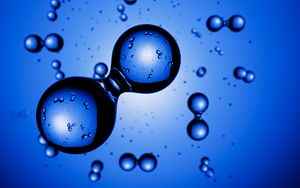(Finance) – The European Commission is pushing on the acceleration on the green hydrogen marketa renewable raw material on which it is focusing a lot in the context of a balanced mix with other sources, to free Europe from dependence on Russia and in general from any future dependence in the energy field. And this is why energy is one of the main production inputs, as evidenced by the recent surge in inflation and a factor of business competitiveness. But how is hydrogen produced and what are its applications?
Hydrogen in the RePowerEu plan
And so the European Commission launched the RePowerEu plan which intervenes on three levels: on the demand side with energy efficiency, on the supply side with the diversification of imports of fossil fuels and the acceleration of the energy transition. All this with the aim of becoming climate neutral by 2050.
Total investments are planned from 300 billion euros (72 in the form of grants and 226 in loans). of which 10 billion for new infrastructures and connections for gas and another 2 billion for the infrastructure needed by some countries to offset the sanctions against Russian oil and the remaining sum to accelerate the green energy transition.
The RePowerEu Plan reviews the targets of the‘energy efficiency from 9% to 13% by 2030 of renewables to 45% from 40% and a series of actions to increase e accelerate the green transition: simplifications inAuthorization process renewables, the obligation to install solar panels on all new buildings, one common purchasing platform for gas, LNG and hydrogen.
The RePowerEu also gives space to hydrogen enhancement and fixed the target of 10 million tons of production of renewable hydrogen e 10 million tons of imports by 2030, to replace natural gas, coal and oil in industries and transport sectors that are difficult to decarbonise. For this purpose they were are an additional € 200 million has been allocated for research and the Commission is committed to completing the assessment of the first major projects of common European interest by the summer.
Meanwhile, major electrolyser manufacturers in Europe have announced a commitment to increase their production capacity ten times to 17.5 GW per yearthanks also to the guarantee of a favorable regulatory framework and better access to finance,
Let’s take a step back: how is hydrogen produced?
Hydrogen is a very abundant element in the Galaxy, where it represents 74% of visible matter, and equally abundant on Earth, although most of the hydrogen atoms it is found in moleculeslike those of natural gas (mainly methane) or water (H2O). It is quite rare in nature to find pure hydrogen molecules and in any case it would be a colorless and non-toxic gas.
THE production method hydrogen also determines the type of hydrogen you get: Green or blue. The type of green or green hydrogen derives from the electrolysis of water (steam reforming).
Exist two streams input in the electrolyser: renewable energy and water. Electricity splits water into two components, hydrogen and oxygen, also producing excess heat, about 20-40% of the electrolyser’s capacity, thanks to the chemical reaction. It will then be necessary to cool the electrolyser. The hydrogen must then be purified and compressed before transport, distribution and storage, until it reaches the various end use applications.
Which hydrogen: green or blue?
The terms “blue” and “green” hydrogen are therefore used to describe different methods of hydrogen production and from which materials they derive (fossil or renewable sources).
The blue hydrogen is obtained through the use of fossil energy, but its production involves the emission of CO2which is why it is supported by a permanent CO2 capture and storage system.
Green hydrogen it is obtained instead from a production with zero emissions. The production process takes place mainly through the electrolysis of water carried out using energy produced from renewable sources.
The cost of producing hydrogen
The production cost Green hydrogen has long been a limiting factor for the use of hydrogen, too high for a competitive use with fossil fuels and renewable energies.
Today the cost of producing hydrogen reached about $ 5 per kilograma price that makes it more competitive, and according to the forecasts of IRENA, the International Agency for Renewable Energy, it could reach up to $ 1 per kilogram by 2050matching the price of methane gas today.
